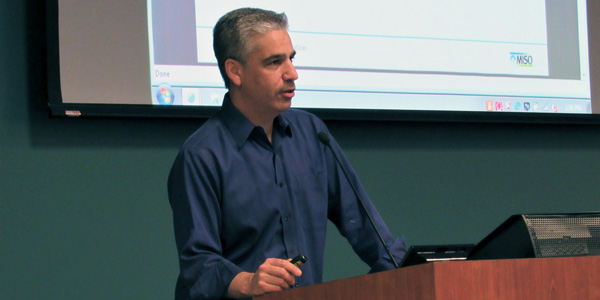By Amanda Durish Cook
CARMEL, Ind. — MISO’s proposed multimillion-dollar spend to upgrade — and then replace — its market platform will yield a nearly threefold return within 12 years, stakeholders heard this week.
The $130 million invested to extend the current system and implement a new platform would reap $341 million in net benefits by 2030, MISO Vice President of System Operations Todd Ramey said during a Sept. 6 workshop in which RTO officials laid out the business case for replacing the system.
MISO’s Board of Directors in June approved the first phase of the upgrade, enabling the RTO to commit $65 million to lengthen the life of its current market platform by at least five years. Another $65 million will be needed to create a new, modular market platform, the final design for which is slated to emerge in 2019. (See MISO Sets Target for Market Platform Upgrade Decision.)
Countdown to Obsolescence
Since 2005, MISO has spent about $350 million to develop and expand its market system, which was built using technology from the 1990s. The RTO predicts it has five to seven years before evolving cybersecurity standards and increasing market complexity render the system obsolete, no longer able to clear the day-ahead market. Current vendor General Electric also plans to end support for the existing platform around that time.
Early-stage prototypes of the new computer system will be released in 2018 and 2019 for stakeholder scrutiny, said MISO Executive Director of Market Design Jeff Bladen. The RTO will begin to swap out market components by 2020 and fully migrate to the new modular computer system by 2023, he said.
“The goal is for a modular system … that is much less brittle than the existing system,” Bladen said, adding that the new system will shed the “hub and spoke” software format of the current system in favor of a “data integration layer” that can run several applications simultaneously while isolating the impacts of market changes so other programs are not affected.
Bladen said MISO’s current system cannot accommodate the “plausible” scenario in which hundreds of storage assets begin participating in the market over the next few years. It’s also unable to manage the “added scale and added scope of the existing market, let alone the security posture we would like to have as we look over the horizon,” he said.
The current system also cannot support some planned market enhancements — such as a price spread product, which will have to wait for the future platform, Ramey said. MISO expects the need for new ancillary services — including the recent additions of enhanced combined cycle modeling, a ramp capability product and extended locational marginal pricing — to only increase in the future.
“In a world where resources will continue to multiply and resource size will continue to decrease, the ability to handle more of them and in a more automated fashion” is a must, Bladen said.
Big Effort
Bladen said MISO is currently assembling a team of employees led by Ramey to oversee the replacement.
“This is going to be at least as big an effort as the original market roll-out,” he said.
MISO plans to issue a request for proposals for a system replacement this month. The RTO is looking for a resilient platform that can handle an evolving energy portfolio with increased energy storage and distributed energy resources, possible footprint expansion and future market products — and include security that can stand up to cyber threats, according to Bladen.
Under the near-term preserve-and-protect plan, MISO “is going to wring the very last degrees of usefulness out of the current system,” Bladen said.
Indiana Utility Regulatory Commission staffer Dave Johnston asked if the platform changeover would require MISO’s Independent Market Monitor to upgrade its own software. The Monitor has functions that run alongside MISO’s day-ahead market to enforce market mitigation when necessary.
Bladen conceded the possible need for an upgrade in order to ensure the IMM’s continued operation. And although “it’s very early in the process,” the Monitor’s IT staff may begin to work with MISO staff on the issue, he said.
MISO will convene another stakeholder workshop in late October to discuss how RTO members’ current software might interact with a new market platform, Bladen added.
Customized Energy Solutions’ David Sapper urged MISO to share regular updates with the stakeholder-led Finance Subcommittee. “They’ve all signed nondisclosure agreements, and MISO can be candid with them,” Sapper said.
MISO would consider that option, along with possibly providing updates to the Market Subcommittee, Bladen said.
RTO officials will also later this month provide the board with a project status report during a board meeting in St. Paul, Minn.
“We’re going to have an ongoing conversation going forward,” Bladen said. “We will take any feedback you have on the work we’ve done so far.”






